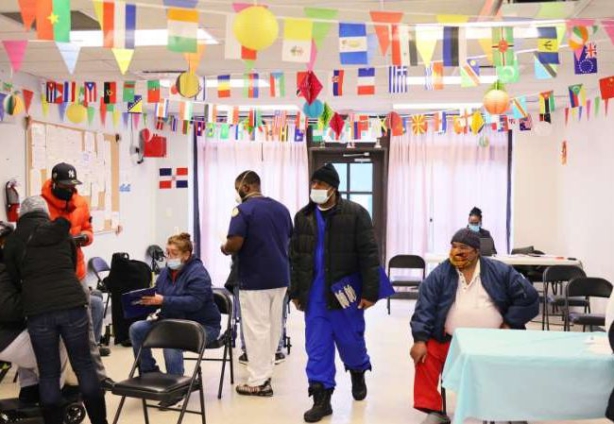All three Covid-19 vaccines available in the United States will help save lives and reduce hospitalizations.
But the newly authorized Johnson & Johnson shot has some key advantages that experts say could help make the vaccination campaign more equitable.
Unlike the first two vaccines, produced by Moderna and Pfizer / BioNTech, the Johnson & Johnson vaccine can be stored in the refrigerator and only takes one shot to protect people from Covid-19.
It could be sent to community clinics, which are equipped to reach people in rural areas or who don’t have regular contact with the health system.
Because it only takes one dose, it could help vaccinate people who might be difficult to reach twice, like people experiencing homelessness.
Officials could also easily bring it to people in jails and prisons. All of those groups are also at high risk of catching and becoming seriously ill with Covid-19.
“This vaccine could make it easier to reach some disproportionately affected groups,” said Sarah Oliver, an epidemic intelligence service officer with the Centers for Disease Control and Prevention (CDC) at a vaccine advisory committee meeting this weekend.
The committee’s Covid-19 vaccine working group felt that the Johnson & Johnson vaccine will improve vaccine equity in the US.
So far,Black and Hispanic people in many states have been vaccinated at low rates, and communities hit hardest by the pandemic have been slowest to be vaccinated.
Mass vaccination sites have the facilities and personnel to handle the Moderna and Pfizer / BioNTech vaccines, which have to be stored in freezers and require two doses.
These massive sites are able to get thousands of doses in arms each day but can be inaccessible to people who don’t have a car or easy form of transportation.
The site in East Hartford, Connecticut, for example, isn’t accessible by city bus.
So far, 82 percent of the people getting vaccinated there are white. Only around 30 percent of people who live in East Hartford and Hartford are white.
Those sites also aren’t designed to reach or connect with people who may be reluctant to get vaccinated.
“They’re not there to counsel you,” said Marcus Plescia, the chief medical officer for the Association of State and Territorial Health Officials, in an interview with The New York Times. “You go to get the shot, end of story.”
Some states are already planning to use some of their doses of the Johnson & Johnson vaccine to reach groups that are harder to vaccinate.
Washington state told CNBC it might use it to vaccinate people working in the fishing industry, who live in shared housing on ships.
New York City plans to use it to vaccinate homebound seniors.
“We’ll have nurses and other medical professionals go apartment by apartment to those who cannot even leave their apartment and make sure they are safe,” Mayor Bill de Blasio said during a press conference this month.
Doses of the Johnson & Johnson vaccine will be limited to start.
Just under 4 million doses are being sent to states this week, and none will be sent next week.
The company says they will have a total of 20 million doses available by the end of March.
Latest Stories
-
Mathew Anim Cudjoe’s Dundee United promoted to Scottish Premiership after Championship win
2 seconds -
NSMQ star Jochebed Adwoa Sutherland sweeps 12 awards at UG Vice-Chancellor’s Ceremony
47 mins -
Ghana’s Education Quality ranked 125 out of 183 countries in latest Global Youth Development Index
1 hour -
Emma Stone wants people to use her real first name
1 hour -
FIFA Club World Cup 2025: Sundowns, Esperance join Al Ahly and Wydad as CAF representatives
5 hours -
CAFCL: Al Ahly set up historic final with ES Tunis
5 hours -
We didn’t sneak out 10 BVDs; they were auctioned as obsolete equipment – EC
9 hours -
King Charles to resume public duties after progress in cancer treatment
10 hours -
Arda Guler scores on first start in La Liga as Madrid beat Real Sociedad
10 hours -
Fatawu Issahaku’s Leicester City secures Premier League promotion after Leeds defeat
10 hours -
Anticipation builds as Junior Speller hosts nationwide auditions
11 hours -
Etse Sikanku: The driver’s mate conundrum
11 hours -
IMF Deputy Chief worried large chunk of Eurobonds is used to service debt
11 hours -
Otumfuo Osei Tutu II celebrates 25 years of peaceful rule on golden stool
12 hours -
We have enough funds to pay accruing benefits; we’ve never missed pension payments since 1991 – SSNIT
12 hours

